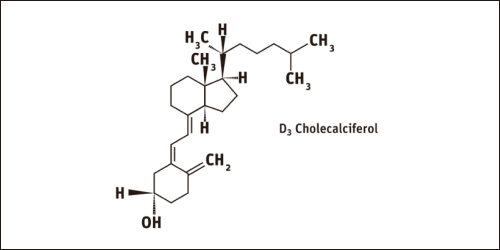Vitamin D
Calciferol
Year of discovery: 1922 | Elmer McCollum
Vitamin D is synthesized by the body when exposed to sunlight from a precursor derived from cholesterol. Vitamin D is therefore not an essential micronutrient if we have the right season and spend enough time in the sun. The active ingredient in vitamin D is actually a hormone that affects organs - in particular the intestines, kidneys and bones. In the gut, vitamin D is involved in the absorption of calcium and phosphorus. In the bones, it assists in the absorption of calcium and phosphorus, and promotes the dense growth of strong bones, as it allows these elements to be absorbed and deposited in the bones.
Primary sources of vitamin D
Sunlight - exposure to ultraviolet B (UVB) rays is essential for the synthesis of vitamin D from its precursor in the skin. There are several foods that are natural sources of vitamin D. These sources are fatty fish, egg yolks, veal, beef and mushrooms.
Vitamin D bioavailability
There is little information on the bioavailability of vitamin D. It is assumed that the food palette has little effect on absorption. Bioavailability also varies from person to person and depends on the level of circulating vitamin D-binding protein in the body.
Risks associated with insufficient or excessive vitamin D intake
Insufficient exposure to sunlight is a major risk factor for insufficient vitamin D levels. Use of sunscreen, higher levels of melanin in the skin (i.e. dark skin), skin coverings (clothing) and time of day are all factors that reduce UVB exposure. Distance from the equator is another factor affecting UVB exposure; people living at latitudes above or below 40 degrees from the equator will not be able to produce vitamin D from a precursor in the skin during the winter months. Breast milk is a poor source of vitamin D. Children who are exclusively breastfed and who have little or no sun exposure require vitamin D supplementation to meet their vitamin D needs. One of the main functions of vitamin D is to enable the absorption of calcium and phosphorus. Vitamin D deficiency causes calcium deficiency, leading to serious consequences for bone health. In children and adolescents, this can cause rickets and adversely affect peak bone mass. In adults, vitamin D deficiency increases the risk of osteomalacia and osteoporosis.




